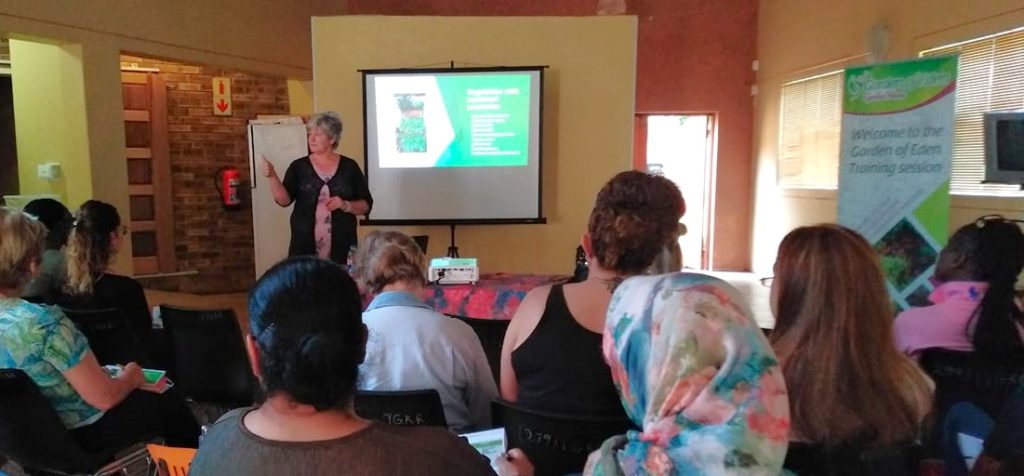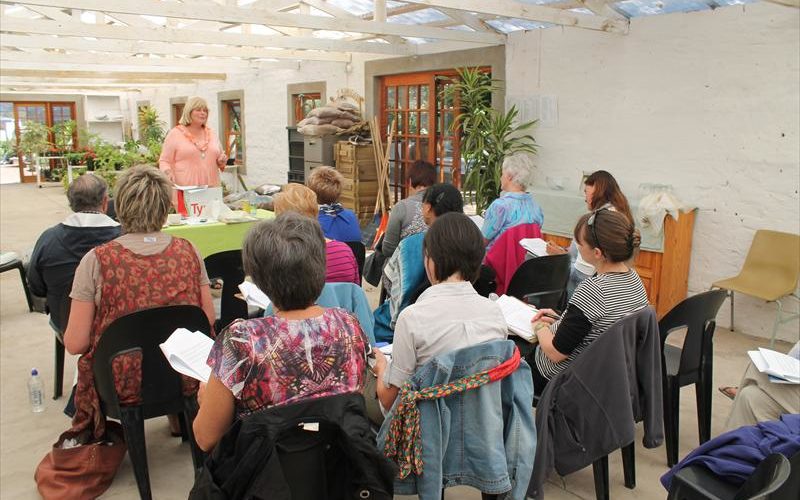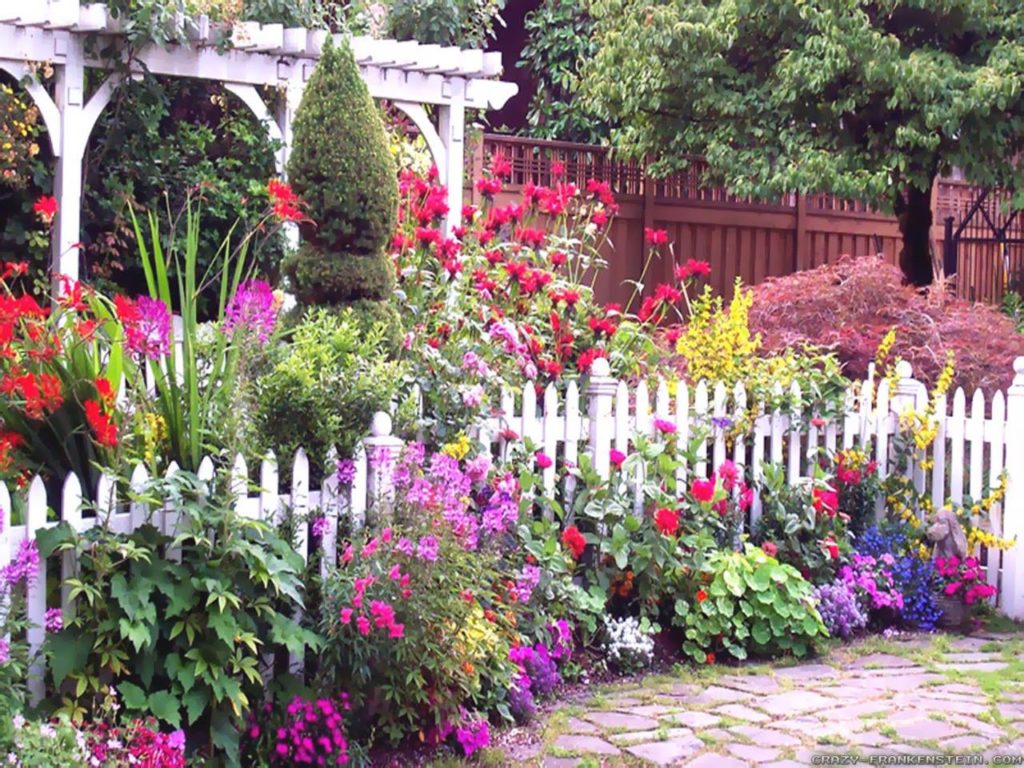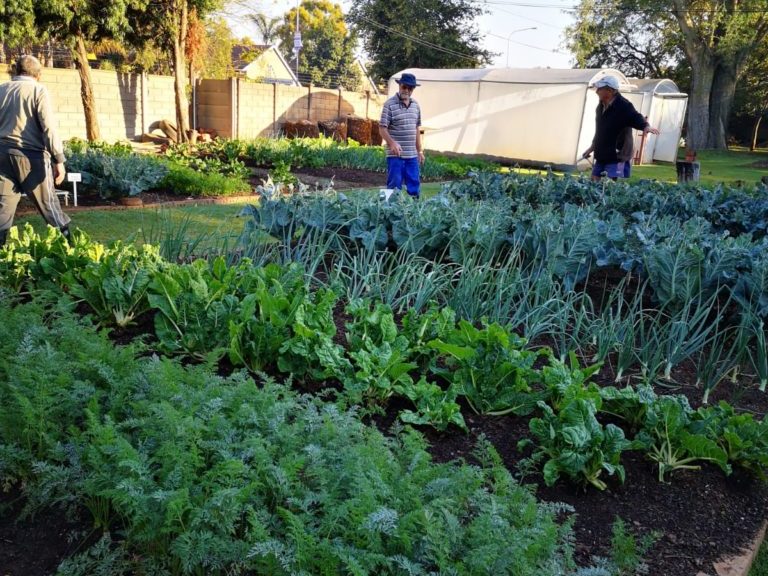Teaching Bold New Methods: Arina Duvenhage and the Garden of Eden Garden School
Mineral malnutrition is a serious global issue affecting hundreds of millions of people. It is estimated that worldwide, 60% of people are deficient in iron, 30% are deficient in zinc, and approximately 15% are deficient in selenium. Calcium, magnesium, and copper deficiencies are also common in both developed and developing nations. These nutritional deficits result in widespread healthcare problems and diminish the quality of life and community resilience.
How do we fight global mineral malnutrition? The answer is one farm at a time. As experts such as Arina Duvenhage of the Garden of Eden Garden School teach, there is a direct link between soil health, food crop nutrient density, and human health. This idea is confirmed by the observation that mineral nutrient deficiencies in humans are most prevalent in regions with unhealthy, nutrient-depleted soils.
Simply put, current agricultural practices relying on synthetic fertilizers do not produce foods that meet our nutritional needs. Soils that are depleted in nutrients and beneficial organisms cannot produce healthy crops. Fortunately, there are cost-effective regenerative farming and gardening methods that restore soils and produce healthy food crops. Arina Duvenhage is one of the experts developing these alternative, organic practices. At the Garden of Eden Garden School, she researches and teaches science-based regenerative farming and gardening techniques that utilize mixtures of rock dust and compost to remineralize and revive depleted and biologically dead soils. Her methods produce disease-resistant plants that bear nutrient-dense fruits and vegetables without synthetic fertilizers or chemical pesticides.
Arina Duvenhage and the Garden of Eden Garden School
Arina Duvenhage is the founder and driving force behind Garden of Eden Garden School, an organic gardening school and website focused on teaching methods for building and maintaining healthy soils that produce vibrant and resilient plants. Garden of Eden was started 26 years ago in South Africa, where it continues to offer in-person guidance on organic and regenerative farming and gardening methods. The school also provides guidance to thousands of gardeners worldwide through its online classes and materials.
Duvenhage’s passion for soil and gardening started in childhood on a family farm in Swellendam, South Africa. She was an Opera singer who studied music and social work before focusing solely on her love for horticulture and landscaping. To deal with the merciless clay soils while living in Secunda, South Africa, she scoured the scientific literature on soil health and restoration. Later, she became interested in how nutrient-dense fruits and vegetables can prevent and counteract human illnesses. This interest guided her research toward the dynamic links between soil biology, soil chemistry, plant health, and human wellness.
The following quote from the Garden of Eden website sums up Duvenhage’s approach:
To eat vegetables that have medicinal properties like antioxidants, vitamins, and minerals, you have to grow them organically. But to produce organic vegetables without the invasion of pests and plant diseases, you must understand the symbioses between plants and the living soil in which you grow them.
Organic vs Conventional Growing Methods
As Duvenhage emphasizes, healthy, nutrient-rich plants require healthy balanced soils. Current standard farming practices, however, are moving in the wrong direction. Worldwide, soil degradation and nutrient deficiencies caused by the overuse of synthetic salt fertilizers lead to lower yields of less nutritious produce. For example, it has been reported that the excessive application of nitrogen fertilizers caused vitamin C levels in lettuce, beets, kale, endive, and brussels sprouts to decrease by as much as 26% over several growing seasons. More recent work by researchers at the Rodale Institute has compared standard farming techniques based on synthetic fertilization with organic, regenerative practices that rely on compost fertilizers. These side-by-side trials show that, particularly under environmental stress, crops grown using organic, compost-based methods were more resilient and nutrient-rich. For example, the amount of vitamin C in green peppers increased by 50% over two growing seasons using the organic method. In contrast, the conventional farming method produced no relevant changes over that interval. In a single growing period, tomatoes grown using the organic method contained 40% more vitamin C than conventionally grown tomatoes of the same type. An example of their results is shown in the graph below (the lines on top of the bars indicate measurement uncertainties).
The researchers of the Rodale Institute study conclude their study with the following statement:
Our research gives scientific support to [the] contention held by organic agriculture pioneers that organic soil management has a significant general beneficial effect on lowering disease damage compared to conventional management. This is related to the better stress tolerance in organically managed soils. Sustainable and conventional farmers can utilize this soil buffering capacity by concentrating more effort on soil improvement rather than employing strategies that require heavy fertilization.
Balancing Soil Biology and Chemistry to Optimize Plant Health and Nutrition
Arina Duvenhage is a champion of organic growing methods, but her techniques go beyond the use of standard organic composts. Duvenhage’s years of research and experimentation led to the realization that growing healthy, nutrient-rich plants involves more than simply using organic gardening products. The key is producing and maintaining biologically and chemically balanced soil. A balanced soil biology requires aerobic (oxygenated) conditions that support an optimal balance of bacteria and fungi that symbiotically support nutrient uptake by plant roots. A balanced soil chemistry needs optimal ratios of macro, micro, and trace nutrient elements and the chemical conditions (e.g., pH, oxygen content, pore water composition) that support beneficial soil biology.
The ultimate goal of the Garden of Eden approach is to build and maintain a healthy and balanced soil that will produce plants that are fully “mineralized,” that is, enriched in all of the mineral nutrients needed to sustain the beneficial metabolic processes in the plant. These processes include the production of vitamins, antioxidants, metabolites, and other protective molecules that defend plants against diseases and allow them to weather environmental stresses. Fruits and vegetables from fully mineralized plants offer enormous health benefits. They provide not only the full suite of mineral nutrients in bioavailable forms but also contain the antioxidants and plant metabolites that promote nutrient absorption in the human body and have been shown to prevent and counteract chronic illnesses. Traditional NPK fertilizers and some organic amendments are not nutrient-balanced. They may bring about plant growth but do not allow plants to mineralize fully.
As Duvenhage teaches, the process of plant nutrient mineralization is based on three factors:
- The soil must contain the full spectrum of nutrients needed to optimize plant health and fruit and vegetable nutrient density.
- The soil biology (e.g., bacteria, fungi, nematodes, arthropods) must be balanced to maintain beneficial soil conditions and optimize the uptake of all mineral nutrients by plant roots.
- The soil chemistry (e.g., pH, oxygen content, moisture levels, pore water composition) must be optimized to support the biological balance required for particular plant species and environmental conditions.
The diagram below shows some of the interconnections between the major soil factors influencing the flow of mineral nutrients from the soil to a crop plant. It doesn’t show all of the possible processes but gives a sense of the complexity of the soil-biology-plant system. The primary pathways by which nutrients from rock dust are transferred to the plant are shown in red.
Achieving a balance between all of these processes requires technical knowledge and practical gardening and farming experience. This is what Garden of Eden Garden School provides in its classes and online materials.
The Centrality of Soil Biology
As implied by the soil-factors figure above, a healthy and balanced soil biome relies on essential macro, micro, and trace nutrients and favorable chemical conditions. The nutrients are made available for plant uptake (mineralization) by a series of chemical and biological processes. These involve the dissolution of the nutrient minerals (the weathering of rock dust particles) and the transformation of the released elemental nutrients into forms that can be absorbed and transported within plant roots. Mineral dissolution occurs through both inorganic and organic processes. Bacteria and fungi consume many nutrient elements during the mineral dissolution process. These organisms are, in turn, consumed by protozoa, nematodes, and microarthropods, which release the nutrients in forms that promote root uptake. The presence of organic acids produced within compost is indispensable for nutrient uptake and transport in plant roots.
The key is to use the right type of compost. While working with gardeners from all over the world, Duvenhage discovered that the microbiology of anaerobic (oxygen-free) compost significantly impairs plant nutrient uptake. One of the main problems is that anaerobic composts lack the beneficial fungi needed to support nutrient uptake by roots. So, even if gardeners had nutrient-dense soil, without the beneficial microbial communities found in aerobic (oxygen-rich) compost, their plants would not mineralize. The lack of mineralization would make their plants less resistant to pests such as aphids and many diseases.
This is why Arina Duvenhage’s approach of mixing rock dust with biologically active aerobic compost is so successful. She combines the technical knowledge of mineral nutrient uptake with the practical understanding of how to make high-quality, nutrient-dense compost using farm and garden wastes and resources.
Achieving Soil Balance Using Rock Dust and Compost
In an interview with Remineralize the Earth, Duvenhage explained that when she started using rock dust in her gardening around nine years ago, she began to see dramatic results. One of the most striking changes occurred when she started including rock dust in her compost was a significant increase in the amount and size of beneficial fungi. She now uses rock dust extensively in client-specific compost mixtures. She has found that it greatly enhances the all-important balance between soil nutrient composition, chemistry, and microbiology. Her goal is to improve her client’s compost nutrient density rather than just providing beneficial biology. In working with local farmers and compost makers, she performs both biological and chemical tests of the compost materials. By trial and error, she discovered that:
“When you put bone meal, blood meal, and rock dust in your compost heap when you build the compost, your microbes build up much quicker, your fungi develop three months earlier and bigger, and there is more nutrient density in your compost.”
Her successful experiments led to a fundamental insight that gardeners and farmers are now benefiting from:
“I could see from day one, because I practiced it here on my farm, that it doesn’t work to work only with the biology. You need to have the nutrients in the compost for the microbes to give the nutrients to the plants.”
She has since extensively studied the best way to remineralize compost to achieve the optimal chemistry-biology balance for plant mineralization. She found that when her compost was around twenty-four days old (not completely broken down), all of the plant-beneficial microbiology was present, and most of the rock dust minerals were already broken down. In this environment, the nutrients from the dissolved rock powder linked up with organic acids that facilitate their uptake by plant roots. So, Duvenhage’s process ensures that the mineral nutrients from the rock dust are dissolved and available for plant mineralization. This nutrient-dense compost can be used to make a nutrient-dense, biologically active liquid extract or “tea.” This compost tea can then be used to remineralize nutrient-deficient soils while providing beneficial microbial communities.
Of course, the particular nutrient profile of rock dust depends on the rock type used. For example, the table below compares the compositions of four relatively common rock types with an example of composted cow manure. As you can see, different types of rock dust are loaded with several essential macro, micro, and trace nutrients. Rock dust for soil remineralization can be more successful with guidance from experts such as Arina Duvenhage. Gardeners and farmers can learn how to determine the appropriate type (and amount) of rock powder for a particular soil environment and plant species.
| Nutrient Element | Composted Cow Manure | USGS Syenite | USGS Basalt | USGS Andesite | USGSGranite |
| Total C | 367 | 0 | 0 | 0 | 0 |
| Total N | 17 | 0 | 0 | 0 | 0 |
| Total P | 168 | 698 | 1,615 | 2,182 | 611 |
| Total Ca | 167 | 8,434 | 50,889 | 36,094 | 13,937 |
| Total Mg | 133 | 1,327 | 21,046 | 8,864 | 4,462 |
| Total K | 400 | 36,111 | 14,527 | 24,904 | 37,605 |
| Total Na | 46 | 68,324 | 24,778 | 32,567 | 30,638 |
| Total Cu | 93 | 0 | 16 | 54 | 8 |
| Total Fe | 185 | 38,165 | 94,519 | 48,037 | 18,811 |
| Total Mn | 125 | 1,781 | 1,471 | 774 | 232 |
| Total Zn | 141 | 233 | 128 | 91 | 84 |
| Total Ni | 3 | 14 | 0 | 13 | 6 |
A major advantage of using rock dust is that it can be a low-cost, organic compost component for many small to intermediate farms and can achieve soil nutrient density and biological balance. Using local rock dust is a big step in the transition away from environmentally harmful synthetic fertilizers.
Putting it into practice
As we have seen, the Garden of Eden School’s approach is rooted in cutting-edge soil science, agronomy, and microbiology, but there is nothing theoretical about their work. Everything Arina Duvenhage and her team do is focused on getting nutrient-dense fruits and vegetables onto people’s tables. Their goal is to teach gardeners and farmers how to produce resilient, nutrient-dense food crops without using chemical pesticides, herbicides, fungicides, or synthetic fertilizers. In one demonstration of the power of their method, Duvenhage converted an empty field into a haven for nutrient-dense fruits and vegetables using only the natural, organic methods we’ve been discussing.
Duvenhage is now starting to take her composting wisdom to local farmers. Farmers usually get their compost by having it delivered from a compost company. But with rising fuel costs, this is becoming economically prohibitive for some. Duvenhage’s current focus is to help farmers make compost on their farms with whatever materials they (or their neighbors) have. The biology and chemistry of the farmer’s soil can be tested, and the compost can be tailored (using rock dust) to meet the nutrient, chemical, and microbiological needs of the specific crops being grown. This approach teaches farmers how to use regenerative farming techniques and replaces the need for synthetic salt fertilizers. In addition, using nutrient-dense, aerobic compost made with rock dust will dramatically reduce the need for insecticides or fungicides because fully mineralized plants are resistant to infestations and fungal diseases. Ultimately, Duvenhage wants to build a community of farmers who share resources and help each other make high-quality, nutrient-dense composts.
The spread of regenerative farming methods, such as making compost from on-farm organic materials and local rock dust, will significantly benefit farmers because they will no longer rely on the formulaic application of expensive synthetic fertilizers. The farmers will reconnect with their own land and learn how local wastes and local resources can be used to produce healthy and nutrient-rich crops. As this type of farming spreads, it will benefit local communities with more eco-conscious agriculture and will put mineral nutrient-rich produce on their dinner tables.
James Jerden is an environmental scientist and science writer focused on researching and promoting sustainable solutions to urgent environmental problems. He holds a Ph.D. in geochemistry from Virginia Tech and a Master’s degree in geology from Boston College. Over the past 20 years, James has worked as a research geochemist and science educator. He joined Remineralize the Earth because of their effective advocacy, research, and partnership projects that support sustainable solutions to urgent environmental issues such as soil degradation (food security), water pollution from chemical fertilizers (water security), deforestation, and climate change. As a science writer for RTE, his goal is to bring the science and promise of soil remineralization to a broad, non-technical audience. When not writing, he can be found at his drum set.
Support us on Patreon
Thank you for joining us today! Please become a member of RTE and support us on Patreon. Unlike many larger organizations, we work with a team of determined and passionate volunteers to get our message out. We aim to continue to increase the awareness of remineralization to initiate projects across the globe that remineralize soils, grow nutrient dense food, regenerate our forests’ and stabilize the climate – with your help! If you can, please support us on a monthly basis from just $2, rest assured that you are making a big impact every single month in support of our mission. Thank you!












samuel tetsopgang
December 23, 2022 (12:48 am)
Dear Dr James. I liked your reports on RTE.
Thank you